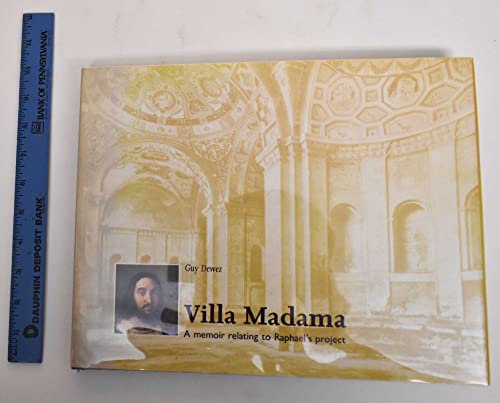guy dewez princeton architectural press (1 Ergebnisse)
Produktart
- Alle Product Types
- Bücher (1)
- Magazine & Zeitschriften
- Comics
- Noten
- Kunst, Grafik & Poster
- Fotografien
- Karten
- Manuskripte & Papierantiquitäten
Zustand
- Alle
- Neu
- Antiquarisch (1)
Einband
- alle Einbände
- Hardcover (1)
- Softcover
Weitere Eigenschaften
- Erstausgabe
- Signiert
- Schutzumschlag
- Angebotsfoto
- Keine Print-on-Demand Angebote (1)
Gratisversand
- Versand nach USA gratis
Land des Verkäufers
Verkäuferbewertung
-
Raphael - Villa Madama
Verlag: Princeton Architectural Press January 1996, 1996
ISBN 10: 1878271962ISBN 13: 9781878271969
Anbieter: Hennessey + Ingalls, Los Angeles, CA, USA
Buch
Hardcover. Zustand: Used - Very Good. The Villa Madama, one of Raphael's most important architectural projects, was unfinished at the time of the artist's death in 1520, and though some further work on the building, commissioned by the Medici as a guest-house for important visitors to Rome, was done by his collaborator Giulio Romano, it was never completed. Nonetheless the Villa, itself intended to emulate the villas of classical Antiquity, has always played a key role in architectural history, serving as a model and an inspiration down to the present post-Modern age. Villa Madama is a critical study of the design history of the building, taking in contemporary literary and visual sources, including an important descriptive letter from Raphael to his patron. Through a rigorous analysis of the surviving designs, and from reconstruction plans and elevations based on measurement of the surviving structure, Guy Dewez presents a comprehensive account of the villa Raphael might have built, had circumstances been different. In so doing Guy Dewez not only restores to an unfinished masterpiece its true form, but he also extends the range of architectural discourse, through a multi-layered, interwoven approach to text, annotation and illustration. This book extends the formal canon of the measured drawing into a new field: its use as a creative tool in analyzing architectural meaning. A traditional instrument of record becomes a means of exploring the architect's intentions and aims. Raphael's Villa Madama remains one of the most important buildings of the Italian Renaissance, admired and studied over the years by architects and art historians. Villa Madama, the most recent study, presents the building in a new aspect, and in sodoing provides a model for the study of historic buildings, leading to a fresh appreciation of the complexities of the architectural process, and of Raphael's status as an architect. Very nice clean, tight copy free of any marks.


